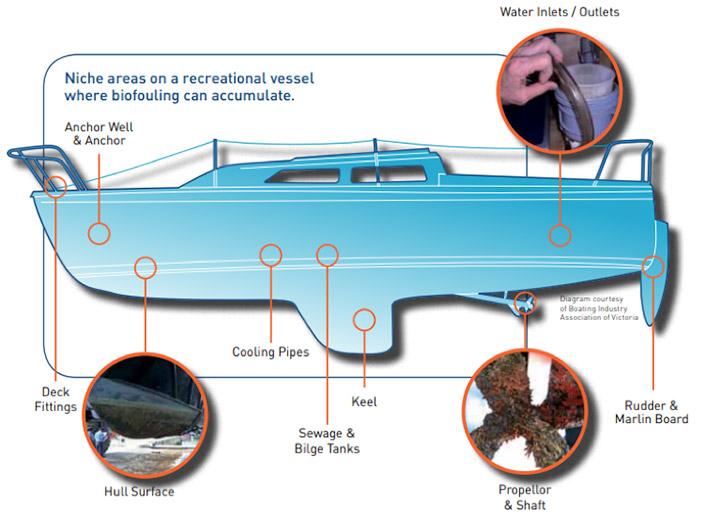How boat owners can help stop the spread of marine pests
Check. Clean. Dry.
Vessel owners can help stop the spread of marine pests by always remembering to check, clean and dry.
- Check your vessel and equipment for any attached animals and plants — remove them. Do not return marine pests to the water.
- Clean your vessel and equipment after use with freshwater.
- Dry your vessel and equipment thoroughly before moving to a new location.
Application of appropriate anti-fouling coatings can help minimise the build-up of biofouling on underwater surfaces.
Areas that you should check, clean and dry
The images below identify cleaning areas that are most likely to host marine pests.

Niche areas on a trailerable recreational vessel where biofouling can accumulate:
- deck fittings
- anchor well and anchor
- hull surface
- trailer
- water inlets and outlets
- propeller
- burley bucket
- sonar tubes or echosounder booths and transducers.

Niche areas on a moored recreational vessel where biofouling can accumulate:
- anchor well and anchor
- deck fittings
- hull surface
- cooling pipes
- sewage and bilge tanks
- keel
- propeller and shaft
- rudder and marlin board
- water inlets and outlets.
Page last updated: 09 Sep 2025